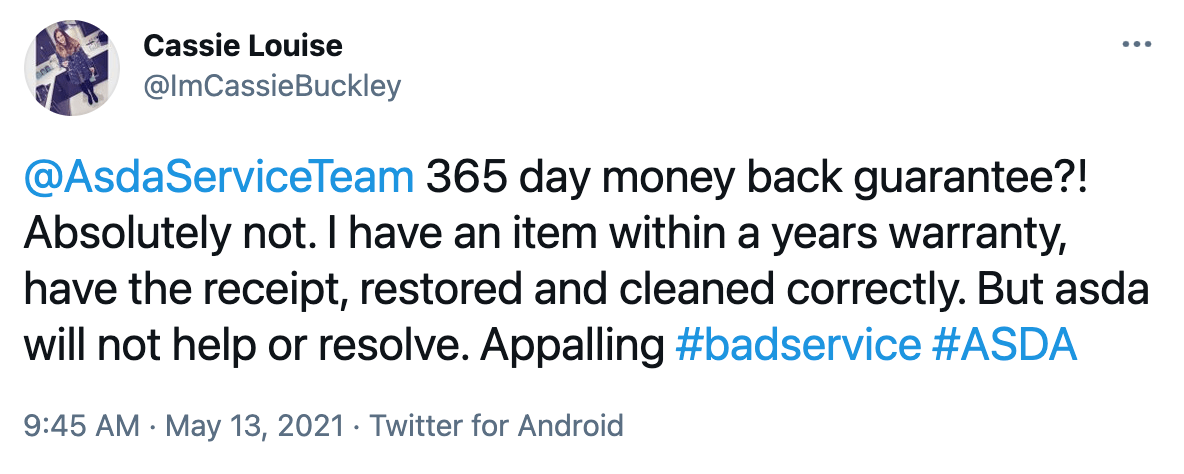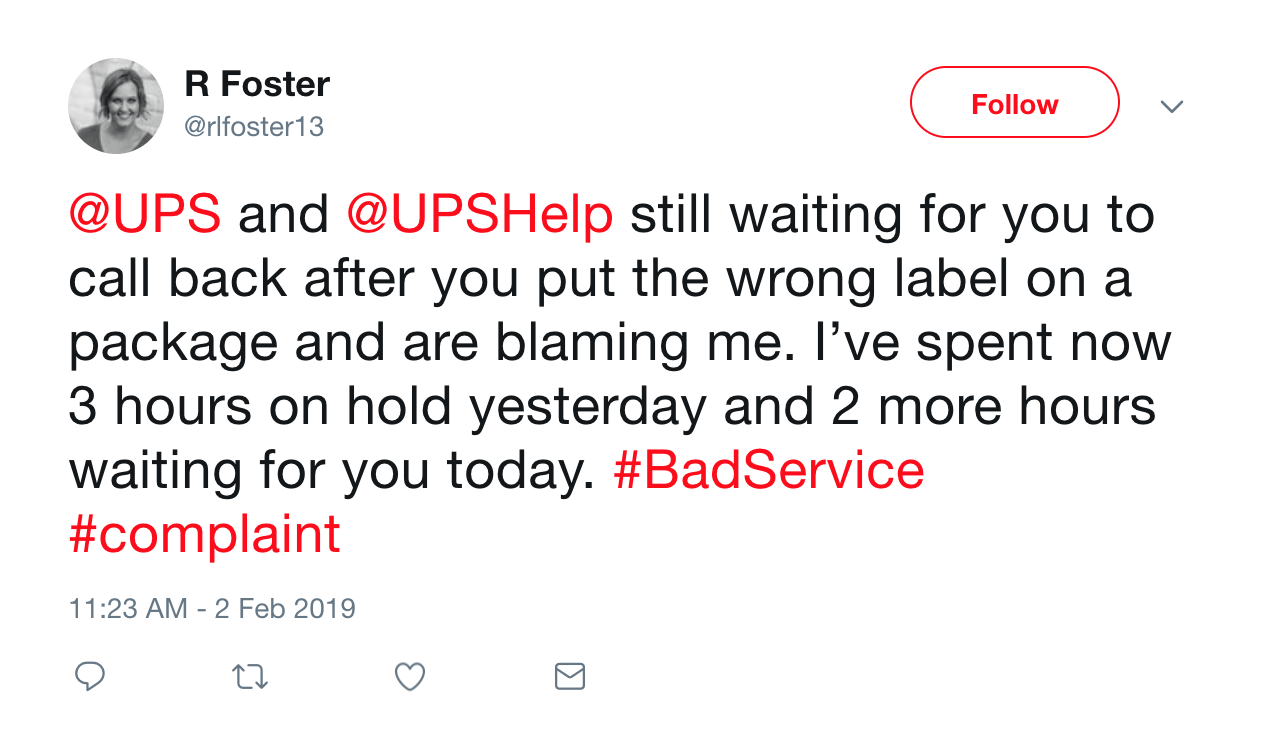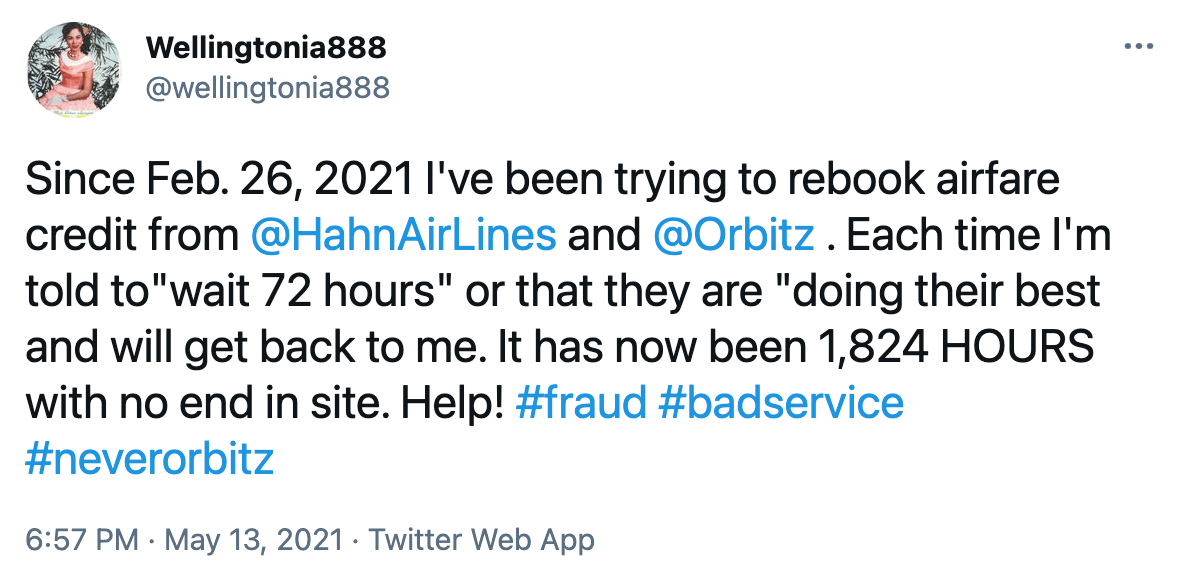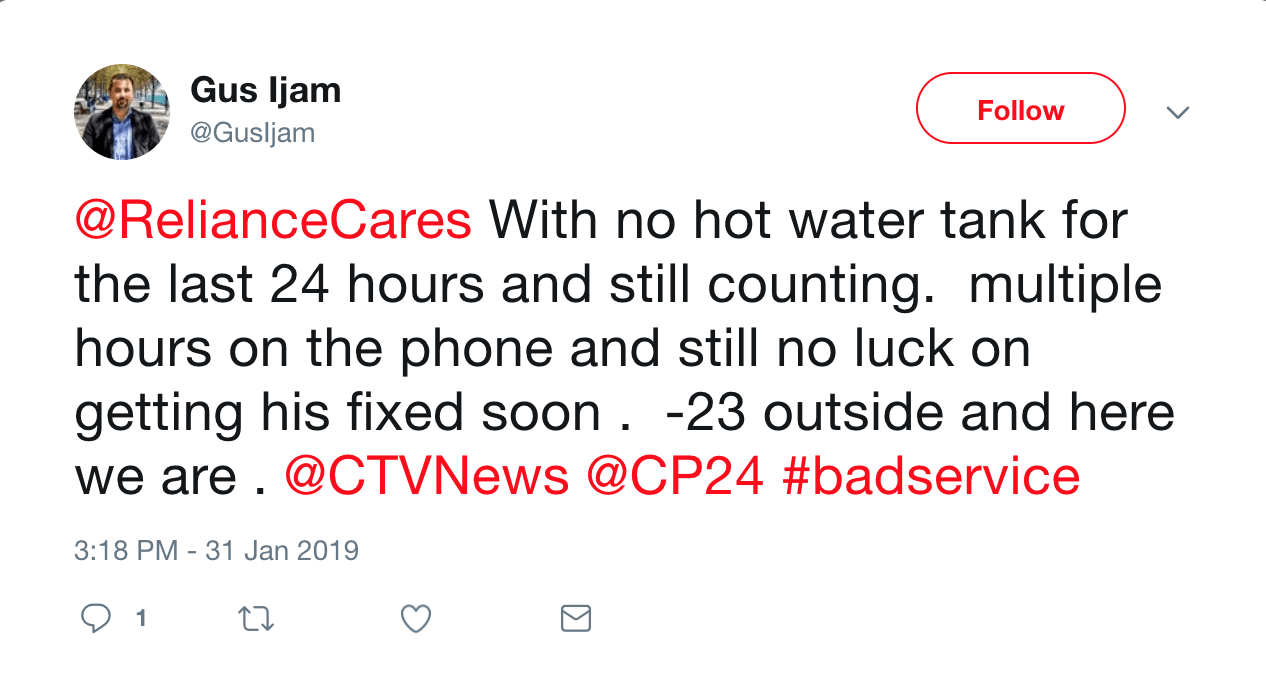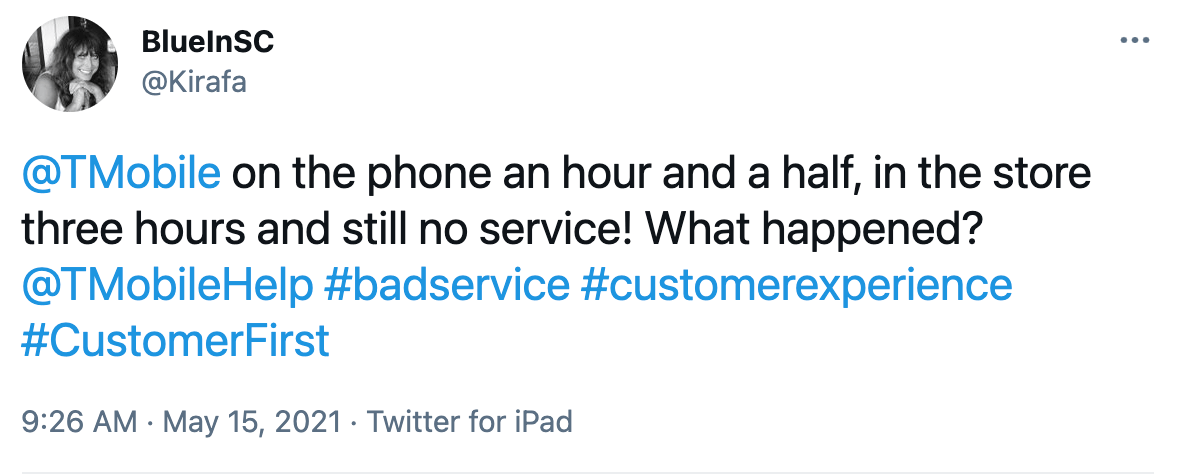
A Guide to Losing Customers (And How to Avoid Bad Customer Service)
More than 1 million people pour through tweets about customer service on a weekly basis. And unsurprisingly, about 80% of those tweets are negative. Hashtags like #badservice and #waiting are the new megaphones customers use to air their grievances with companies who deliver bad customer service.
If you frustrate customers to the point of creating a Twitterstorm about your bad customer service, you’ll send them running for the door. Even worse, the 1M people sifting through tweets will hear about the bad service and take their business elsewhere, too.
The customer service experience your agents deliver largely determines how many customers you keep and how many you lose. To see what drives customers to share their negative experiences online, then leave, I jumped on the 1-million-person bandwagon to find some tweets about bad customer service.
With those messages in mind, we created a list of what drives customers to quit doing business with your company. Here’s your guide to losing customers, and what you can do to avoid getting flagged with the badge of dishonor – #badservice.
How to lose customers
1. Keep your employee attrition rates sky-high.
Your seasoned agents know how to communicate with your customers. They have tons of knowledge about your products and services and they hand that knowledge off to your customers. Plus, they know the behaviors of your typical customer – how they think, speak and act.
The more agents you lose, the more experience and organizational knowledge you lose along with them. Then, your customers deal with the frustrations of new agents who aren’t fully ramped and well-versed in your customer speak. Often, this means new agents have to transfer customers to different agents or departments to solve complex problems.
How to avoid it:
Keep your agents in their seats. Create career paths and development opportunities for your team of agents, so they have a reason to grow with your company. Schedule regular 1:1 conversations to check in and see how they feel about their roles. Fit development and coaching into your daily routine, so your agents know you’re dedicated to their success. Then, they’ll stick around to share that success with your customers.
[Read Next] How to build purpose into the role of call center agents
2. Put money before the needs of your customers.
Loyal customers are 10x more likely to repeat purchases with your company. And, 80% of your revenue comes from 20% of your most loyal customers. But, you can count on those customers ditching you for the competition if you’re stingy during tough times.
Take the case of a canceled flight. Your customers shouldn’t have to pay duplicate fees or buy an extra plane ticket because of circumstances out of their control (thunderstorms always seem to throw a wrench in air travel plans). Put your customers first in the short-term, and the payout will be much higher than the $200 voucher you hand out to fix a customer’s problem.
How to avoid it:
Take the needs of your customers into consideration. Empower your agents to remedy a bad situation for your customer, even when your company isn’t at fault. Even if it means compensating customers for their losses. Things happen. Your customers’ repeat business after a gesture of goodwill makes up for those in-the-moment losses, and then some.
3. Blame the customer.
Pointing fingers and placing blame gets stamped with a big fat no during customer service interactions. There’s nothing worse than calling in for help, only to leave the interaction worse off. Then, not only is your customer dealing with the persisting issue, but they’re even more frustrated with their overall customer experience. Blame the customer, lose the customer.
How to avoid it:
Be empathetic with your customers, regardless of fault. Don’t point fingers or place blame. Instead, train your agents to listen to your customer’s issue and find a resolution that benefits both the customer and your company. Coach them to find the source of the problem, so they can proactively solve future problems, too.
And, if it turns out that your customer was at fault, offer up a five-minute training session and some resources to get them back on track. Your customers will leave the call feeling satisfied, and they’ll be empowered with new knowledge to problem-solve for themselves later on.
[Read Next] 5 customer satisfaction metrics you can track for a boost to ROI
4. Don’t optimize your customer journey regularly.
When you don’t listen to your customers, they leave. And, when you don’t address poor service after your agents deliver a bad experience, you end up with a whole string of frustrating experiences. Your CSAT surveys give you a direct line to your customers’ minds. And, your interaction recordings and transcriptions let you see where your agents need help, so you can improve the customer journey.
You have thousands of data points on hand to tell you about the wants, needs and behaviors of your customers (and agents). Your customer service data is the nucleus of your call center. But when you tap into these resources, then refuse to act on what you find, you create a difficult path for your customers to get help. That makes for repeats of bad experiences.
How to avoid it:
Send out CSAT surveys to get direct feedback on customer experiences. Every time a customer flags a poor experience, listen. Readjust to improve for your customers the next time around. And, review agent-customer interactions regularly. Use automation rules to search through interactions for trigger words, like “cancel” and “frustrated,” then deliver them to your own queue for review. Dig into those interactions and find out what went wrong. Coach your agents to fix any issues you spot.
5. Don’t coach your agents regularly.
Inaccurate answers and slow response times are the byproducts of untrained agents. Agents that don’t have the coaching they need won’t be empowered to make decisions for customers, even in dire circumstances.
You can bet on this: if you leave a customer with no hot water during a Polar Vortex with temps colder than Antarctica and Mars, they won’t be a repeat customer.
How to avoid it:
Encourage your agents to help customers without asking for approval, first. Give your agents the resources and autonomy they need to do what’s right for your customers (within reason, of course). And, keep special circumstances in mind. Prioritize emergency situations and concerns that pop up out of the norm. Don’t let strict protocol and procedures dictate the service you give your customers under special circumstances. (Yeah, a negative 60-degree Windchill counts as a special circumstance.)
6. Don’t meet your customers where they are.
The ever-evolving customer expects you to meet them where they are (and spoiler alert, they’re everywhere). It’s on you to show up when and where your customers need you – even if it means climbing four flights of stairs. Because they know if you won’t be there, your competitors will.
Failing to deliver an omnichannel experience means leaving valuable customers hanging without answers. Ignoring customers doesn’t make their problem go away. When you get direct messages on Twitter and Facebook, but they go unanswered for days, you’re driving customers into the arms of more responsive competitors.
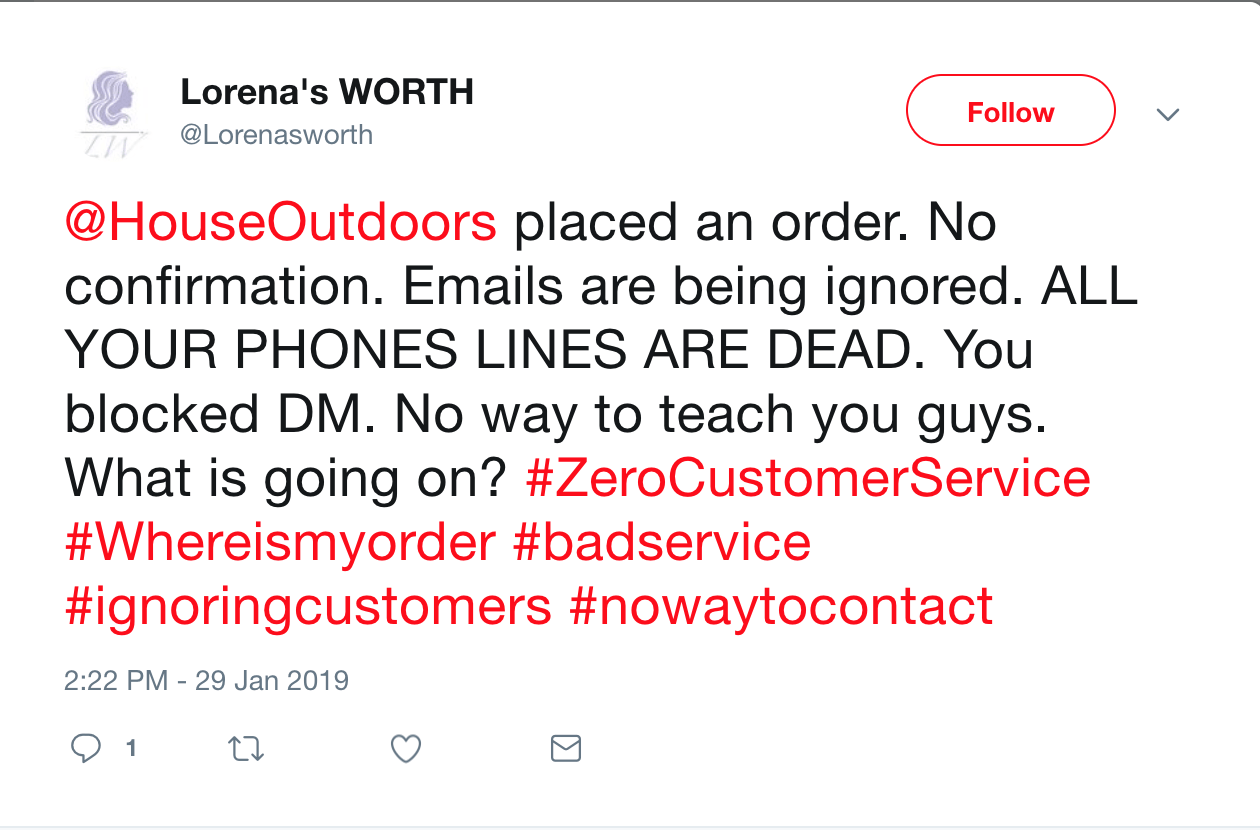
[Read Next] The transformative power of an omnichannel contact center
How to avoid it:
Use an omnichannel contact center platform and consolidate every customer interaction into a single queue. Use skills-based routing to send customers to the right set of agents. And, set up monitoring for your social media accounts and point those interactions to the same queue, too. Then, your agents won’t miss a beat or forget to address messages on channels that can be tricky to keep up with.
7. Let your KPIs and wait times slip.
Metrics aren’t everything, but metrics still matter. And key metrics like average speed of answer and first call resolution seriously impact how many customers you keep. Two-thirds of your customers will only wait on hold for two minutes or less. And 34% of people won’t call back once they hang up. Instead, they’ll head straight for the door. Or, they’ll let their anger build up for a few weeks, then quit. Either way, the cards aren’t in your favor when you let customer wait times fall short of expectations.
Similarly, some 86% of customers expect their issue to be resolved on the first call. And when you don’t deliver on that metric, your CSAT scores drop 15%. Low customer satisfaction is the gateway to lost customers.
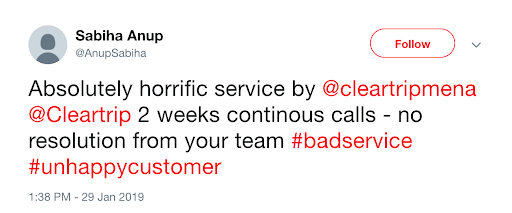
How to avoid it:
For starters, pack in more training hours for your agents. Spend time giving feedback and sitting down with your agents to talk about performance, metrics, and how they feel about their jobs. A study by MetricNet found that a lack of agent training may be the cause of consistently low FCR. And, contact centers that delivered 50+ hours of annual agent training had a higher than average FCR.
Next up, make metrics more visible to your agents. Share dashboards and individual performance metrics with your team, so they can see how they’re tracking toward their goals. Then they have the insight they need to auto adjust when they’re off course. The added visibility keeps them on track with their KPIs, so your customers get the best possible experience.
[Learn More] Give agents daily visibility into their goals and progress with Sharpen Performance Tiles
We originally published this post on February 5, 2019, and we updated it on May 20, 2021.




